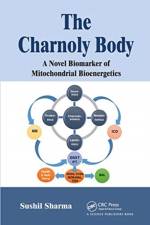av Sushil Sharma
3 405
Nova Science Publishers, New York, U.S.A has now released Personalized Medicine (Beyond PET Biomarkers), which is an extension of the authors recently published book Progress in PET Radiopharmaceuticals: Quality Control and Theranostics. In addition to recently-developed clinically-significant PET-RPs as biomarkers, this book describes various other emerging biotechnologies including: genomic medicine, nanotechnology, novel molecular biomarkers, and noninvasive imaging biotechnologies for early theranostics and personalised patient care, with minimum or no adverse effects. New therapeutic interventions including gene and cell therapies, pharmacogenomics, next generation sequencing, genome-wide association studies, proteomics, metabolomics, bioinformatics, systems biology complementing areas of pharmacokinetics and pharmacodynamics, human investigations and clinical trials, pharmacovigilance, pharmacoepidemiology, and population pharmacology are some of the most significant disciplines of predictive, precision, and personalised medicine (PM) as described in this book. More specifically, different sub-specialties of omics biotechnology including: genomic, proteomic, glycomic, lipidomic, metabolomics, metalomic, and microRNA biomarkers are described to accomplish early and personalised theranostics of chronic illnesses with currently limited therapeutic options and success. Recent advances in nanotechnology and novel biomarkers to accomplish personalised theranostics of chronic diseases including, but not limited to: cancer, fetal alcohol syndrome, Alzheimers disease, Parkinsons disease, vascular dementia, amyotrophic lateral sclerosis, and multiple sclerosis. Usually, nanoparticles (NPs) are trapped in the reticuloendothelial system (RES) comprising the lungs, liver, and spleen. To prevent their entry into the RES system and enhance drug targeting, stealth property of polyethylene glycol (PEG) as a covalent linker is utilised. However, pegylation may reduce the biological activity of the antibody or other labile molecule attached to NPs. Therefore, positively-charged chitosans and negatively charged alginates have been developed. Liposomal encapsulated Doxorubicin (Adriamycin) was approved in the early seventies for the treatment of breast cancer. In addition, enhanced permeability and retention (EPR) property of newly synthesised micro vessels of a hyper proliferating tumor is utilised to selectively invade the cancer stem cells is intricately described. Various noninvasive in-vivo imaging technologies including computerised tomography (CT), magnetic resonance imaging (MRI) along with magnetic-resonance spectroscopic (MRS) capability, single photon emission tomography (SPECT), positron emission tomography (PET), ultra sound alone or as hybrid images to obtain precise 5D anatomical landmarks, regional physiology, and biochemistry of the human body organs at cellular, molecular, and genetic level in health and disease are described. The book also describes in-vitro methods to acquire images of tissues and cells in culture employing digital infrared imaging, digital fluorescence microscopic, confocal microscopic, and fluorescence resonance transfer (FRET) resonance imaging for detecting apoptosis and/or necrosis at the cellular, molecular and genetic level. This timely-released manuscript will attract basic scientists, researchers, and physicians interested in further developing the emerging concept of personalised medicine (PM), and will serve as a textbook for Masters, M.D., and Ph. D students, and a reference book for doctors, professors, basic researchers, scientists, and general public. The author has explained recently-discovered novel biomarkers for the personalised diagnosis and treatment of cancer, cardiovascular diseases, neurodegenerative diseases, and other chronic inflammatory diseases such as asthma, COPD, cystic fibrosis, migraine, and rheumatoid arthritis to accomplish the long quested goal of evidence-based personalised theranostics (EBPT). Recently-discovered disease-specific biomarkers can be successfully employed alone or in combination for the personalised treatment of chronic multidrug-resistant illnesses. Particularly, progressive neurodegenerative diseases such as fetal alcohol syndrome, Parkinsons disease, drug addiction, Alzheimers disease, vascular dementia, amyotrophic lateral sclerosis, and demyelinating relapse and remission multiple sclerosis (RRMS) are described in detail because personalised treatment of these devastating diseases is currently a significant challenge. There are several other chronic drug resistant pro-inflammatory and infectious diseases, which could not be covered in sufficient detail owing to the lack of expertise, time, and limited space allocated to write this dedicated and clinically significant book. The author apologises to the entire global scientific community for his own ignorance, and humbly requests readers to go through the books interesting and most recent contents to enhance their basic knowledge regarding personalised medicine beyond PET biomarkers, which is one of the most demanding disciplines of modern medicine.








